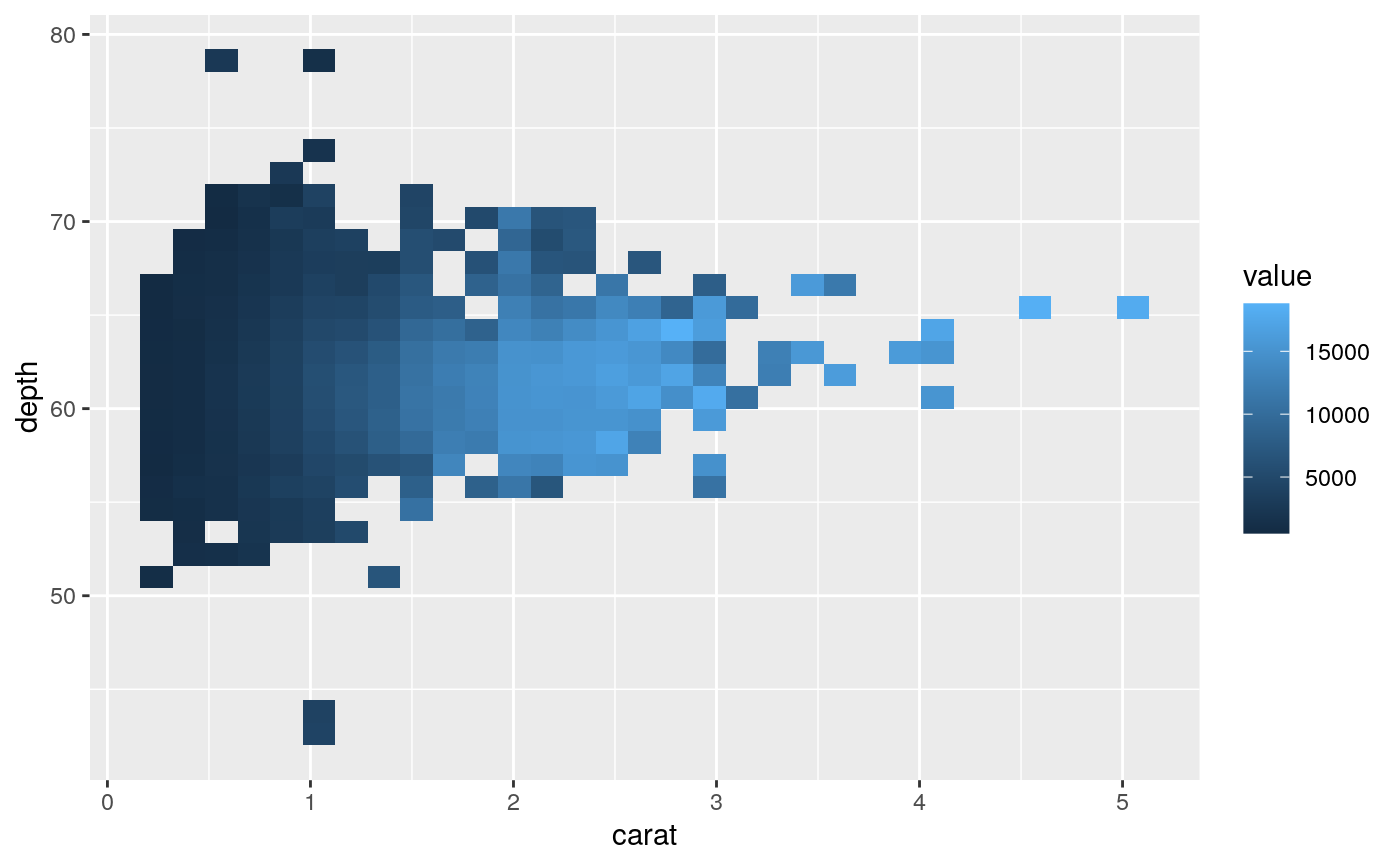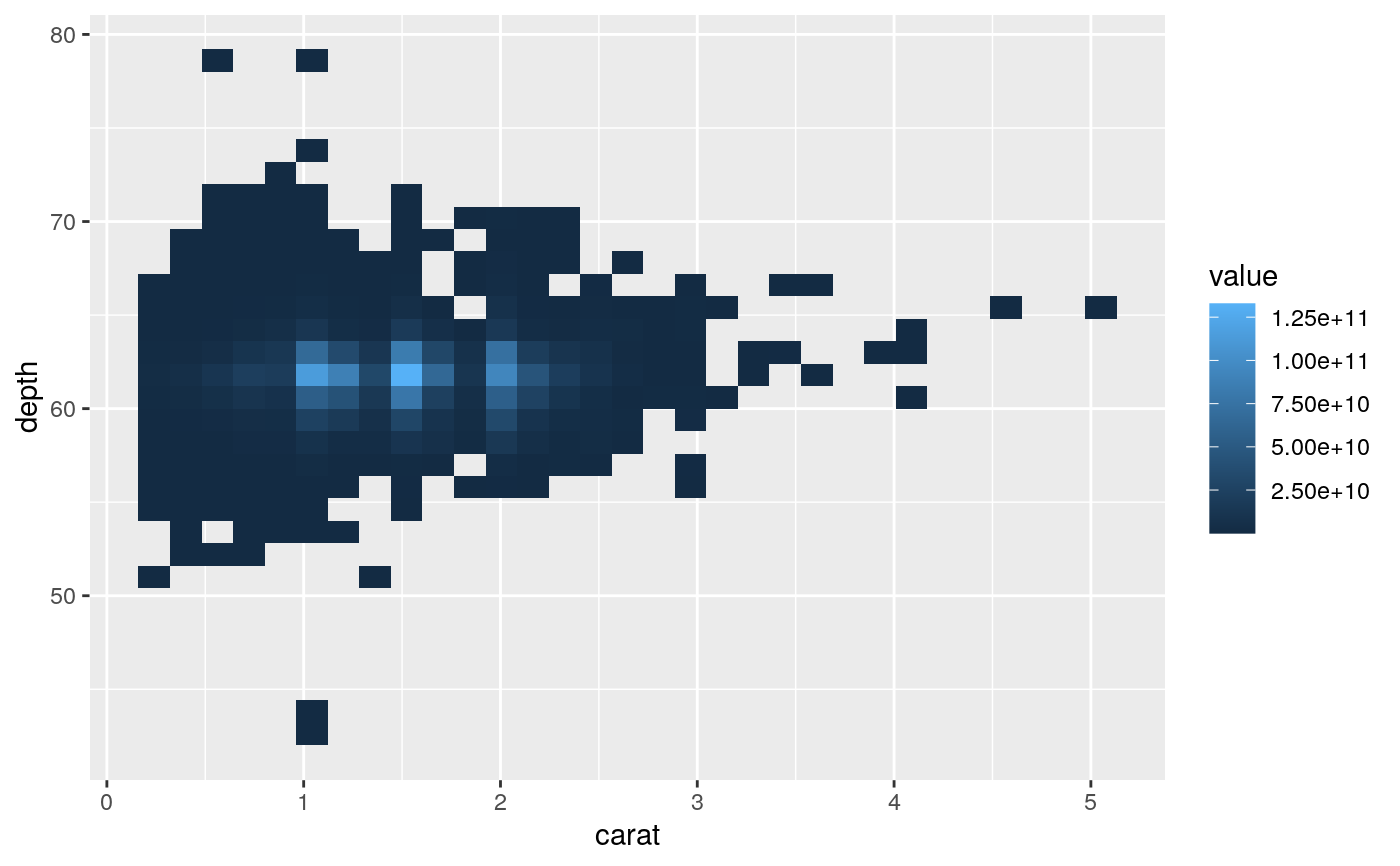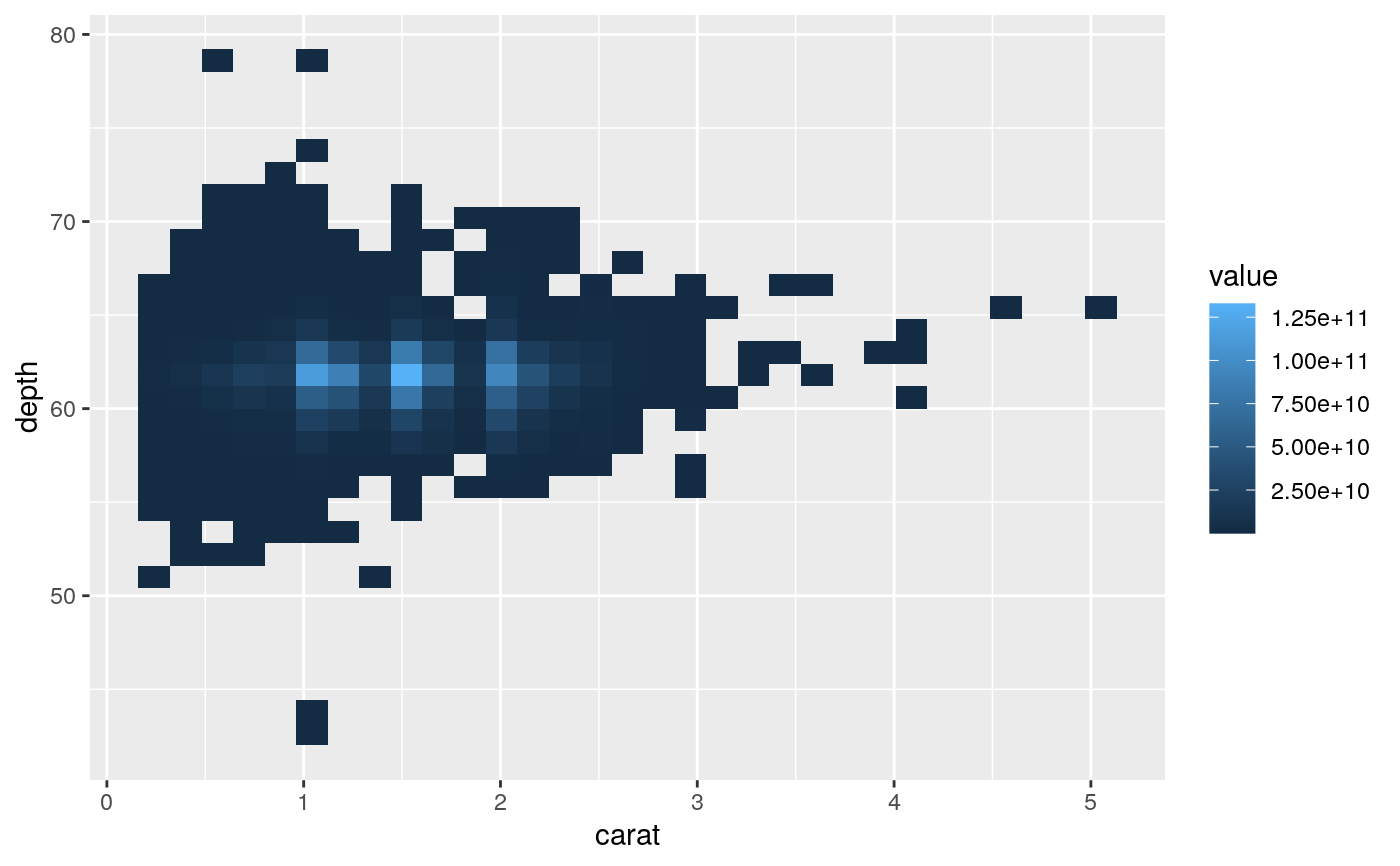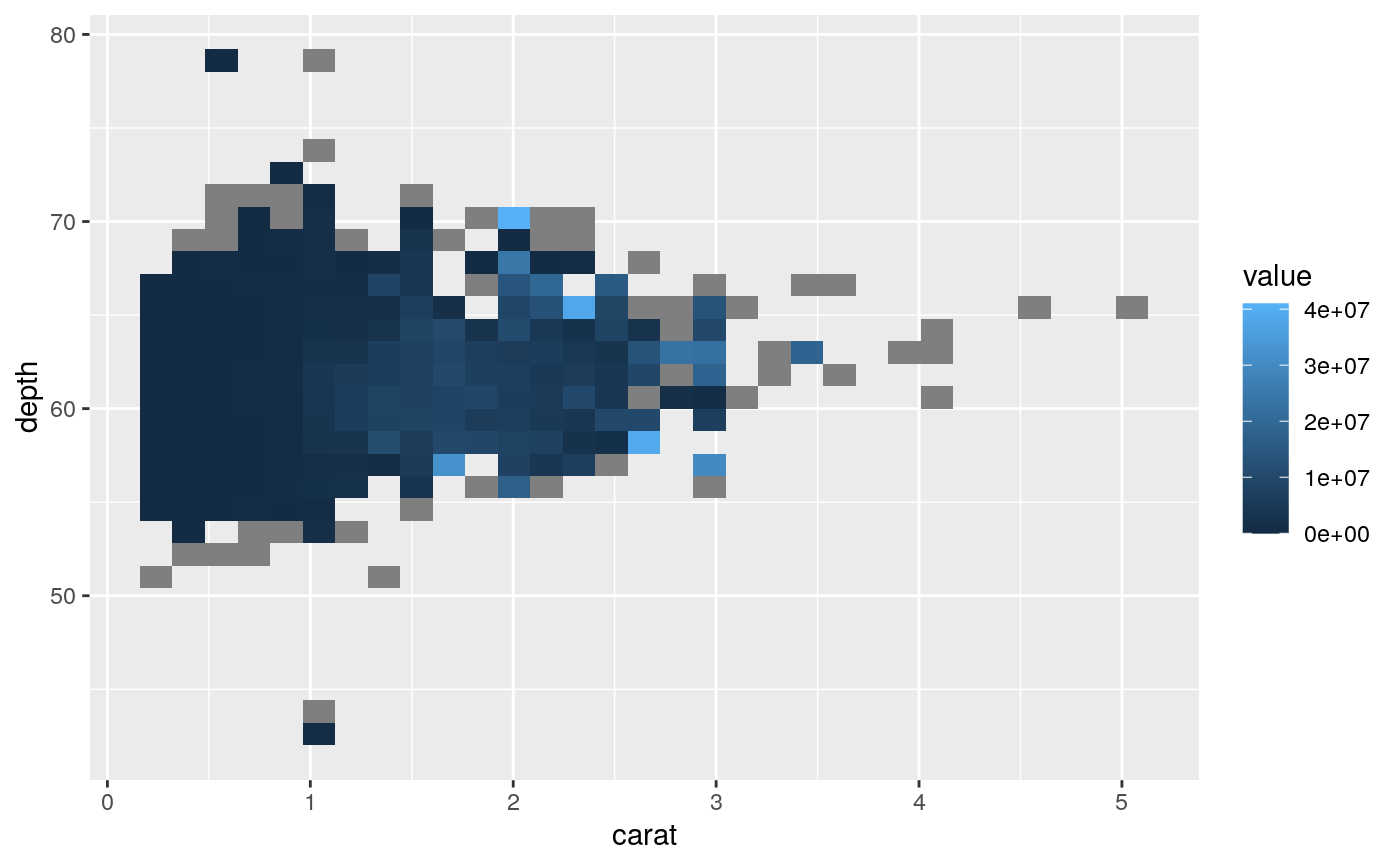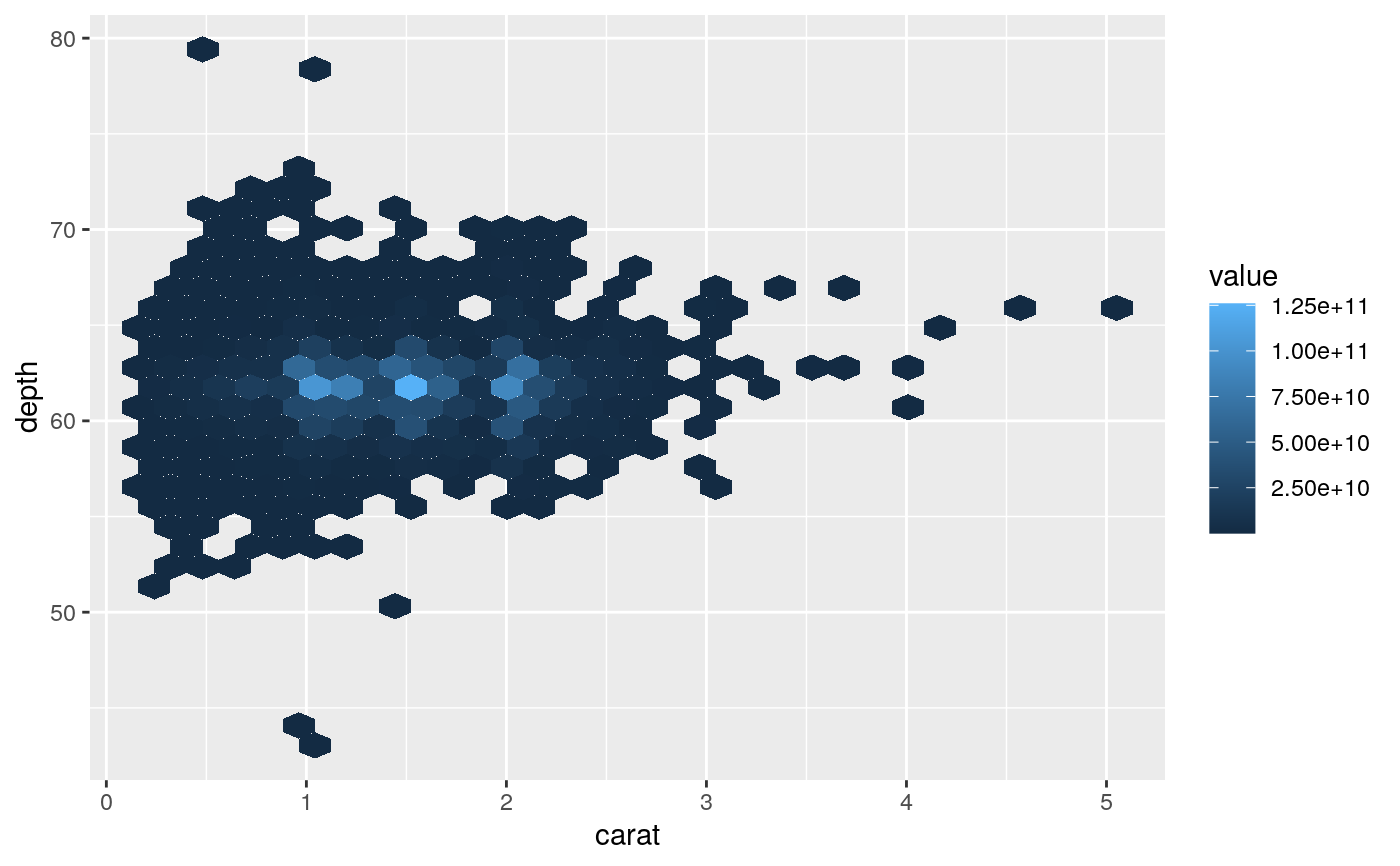Bin and summarise in 2d (rectangle & hexagons)
Source:R/stat-summary-2d.r, R/stat-summary-hex.r
stat_summary_2d.Rdstat_summary_2d is a 2d variation of stat_summary().
stat_summary_hex is a hexagonal variation of
stat_summary_2d(). The data are divided into bins defined
by x and y, and then the values of z in each cell is
are summarised with fun.
stat_summary_2d( mapping = NULL, data = NULL, geom = "tile", position = "identity", ..., bins = 30, binwidth = NULL, drop = TRUE, fun = "mean", fun.args = list(), na.rm = FALSE, show.legend = NA, inherit.aes = TRUE ) stat_summary_hex( mapping = NULL, data = NULL, geom = "hex", position = "identity", ..., bins = 30, binwidth = NULL, drop = TRUE, fun = "mean", fun.args = list(), na.rm = FALSE, show.legend = NA, inherit.aes = TRUE )
Arguments
| mapping | Set of aesthetic mappings created by |
|---|---|
| data | The data to be displayed in this layer. There are three options: If A A |
| geom | The geometric object to use display the data |
| position | Position adjustment, either as a string, or the result of a call to a position adjustment function. |
| ... | Other arguments passed on to |
| bins | numeric vector giving number of bins in both vertical and horizontal directions. Set to 30 by default. |
| binwidth | Numeric vector giving bin width in both vertical and
horizontal directions. Overrides |
| drop | drop if the output of |
| fun | function for summary. |
| fun.args | A list of extra arguments to pass to |
| na.rm | If |
| show.legend | logical. Should this layer be included in the legends?
|
| inherit.aes | If |
Aesthetics
x: horizontal positiony: vertical positionz: value passed to the summary function
Computed variables
Location
Value of summary statistic.
See also
stat_summary_hex() for hexagonal summarization.
stat_bin2d() for the binning options.
Examples
d + stat_summary_2d(fun = var)
